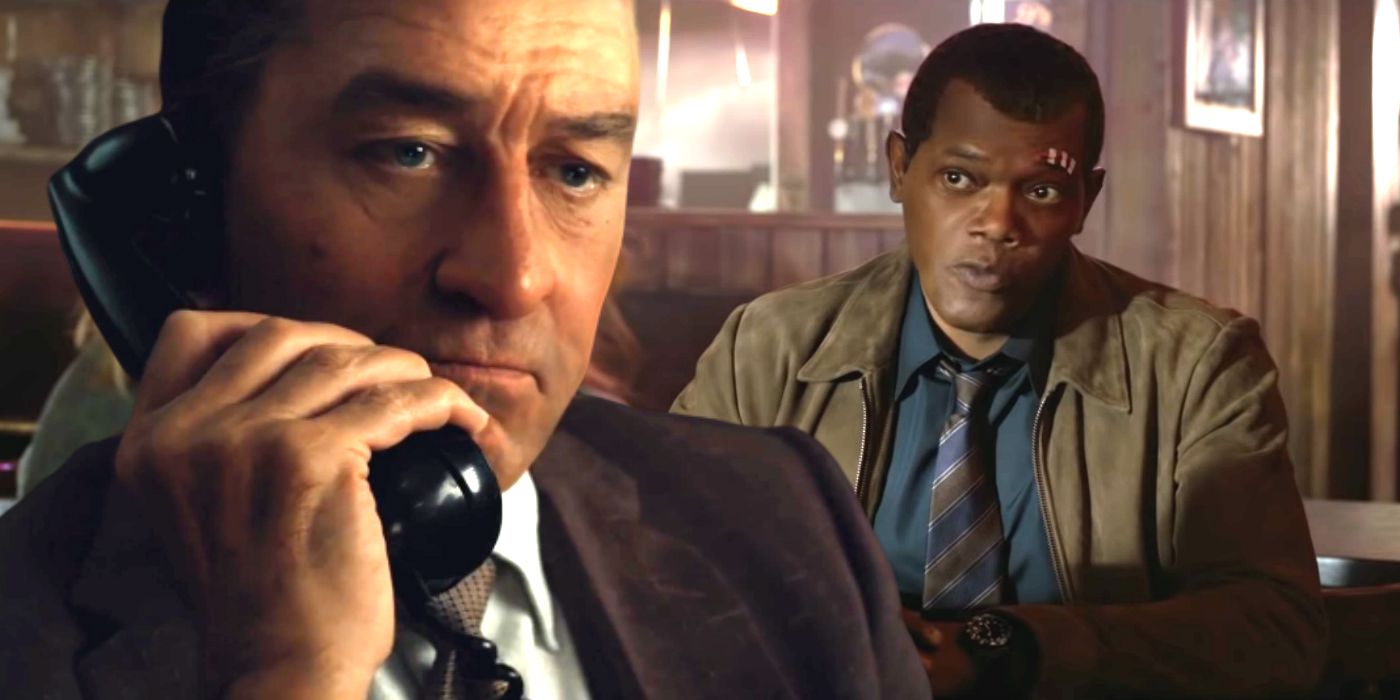Martin Scorsese’s The Irishman uses de-aging technology similar to that seen in the MCU – but it’s even more successful than Marvel’s. The latest crime epic from the Goodfellas director sees him reunite with Robert De Niro and Joe Pesci for an era-spanning drama, telling the story of Frank “The Irishman” Sheeran, a member of the Teamsters union who works as a hitman for the mob.
De Niro plays Sheeran through the years, undergoing CGI de-aging to allow him to play the actor as young as 30 (albeit briefly), and for the majority of the film he, Pesci, and Al Pacino are all playing – and looking – younger than their years. Actors undergoing such extensive de-aging is nothing new, of course, and while it’s been seen in a range of movies, it has been best used in the MCU. From Michael Douglas’ Hank Pym in Ant-Man, to Robert Downey Jr. in Captain America: Civil War, Marvel have continued developing the technology, culminating with a full movie appearance by a Samuel L. Jackson looking straight out of the 1990s in Captain Marvel.
Click the button below to start this article in quick view.
Marvel’s de-aging technology is very advanced and, for the most part, looks very convincing. Jackson’s, in particular, is an impressive feat, given how good it looks and how much of it is used across the movie, but The Irishman‘s – while having a similar approach – is actually better than what Marvel have done. While both Marvel and The Irishman used the same “Medusa rig” developed by Industrial Light & Magic, there were some differences. Marvel’s approach has relied more on referencing what actors used to look like – for Jackson, they looked at his movies from the 90s such as The Negotiator - and used that as a model.
Scorsese, on the other hand, was all about performance, using the technology to ensure all the facial expressions were captured, and then using CGI. It’s about making them look younger, but it doesn’t try and push things as far as Marvel have with, say, Downey Jr. The Irishman caused concern with a glassy-eyed still of De Niro in army gear, but it’s far less distracting in motion (and that particular moment is very brief), and feels more natural than the kind of softer-focus, overly-smooth approach used in Civil War. That’s aided by The Irishman‘s huge runtime too, because after a while, you simply stop noticing.
It also helps that age and memory is so integral to the plot and themes of The Irishman. While de-aging has mostly been used for big blockbusters from Marvel and Star Wars, this is actually a perfect fit: it’s told from an old man looking back on his life and younger self, and the way the de-aging works perfectly blends as if to help capture that sense.Marvel attempts to capture what actors looked like, but in The Irishman, it’s about De Niro’s Sheeran looking back on his life as an old man; he’s a version of himself seen through that lens, rather than he actually was. It becomes a seamless part of the movie, in a way Marvel’s de-aging has yet to quite manage. Marvel’s de-aging is still impressive – and again, it comes from the same company that is continuing to develop the tech – but The Irishman gives one of the best showings yet of how it can be so effectively used.
- The Irishman (2019) release date: Nov 27, 2019
